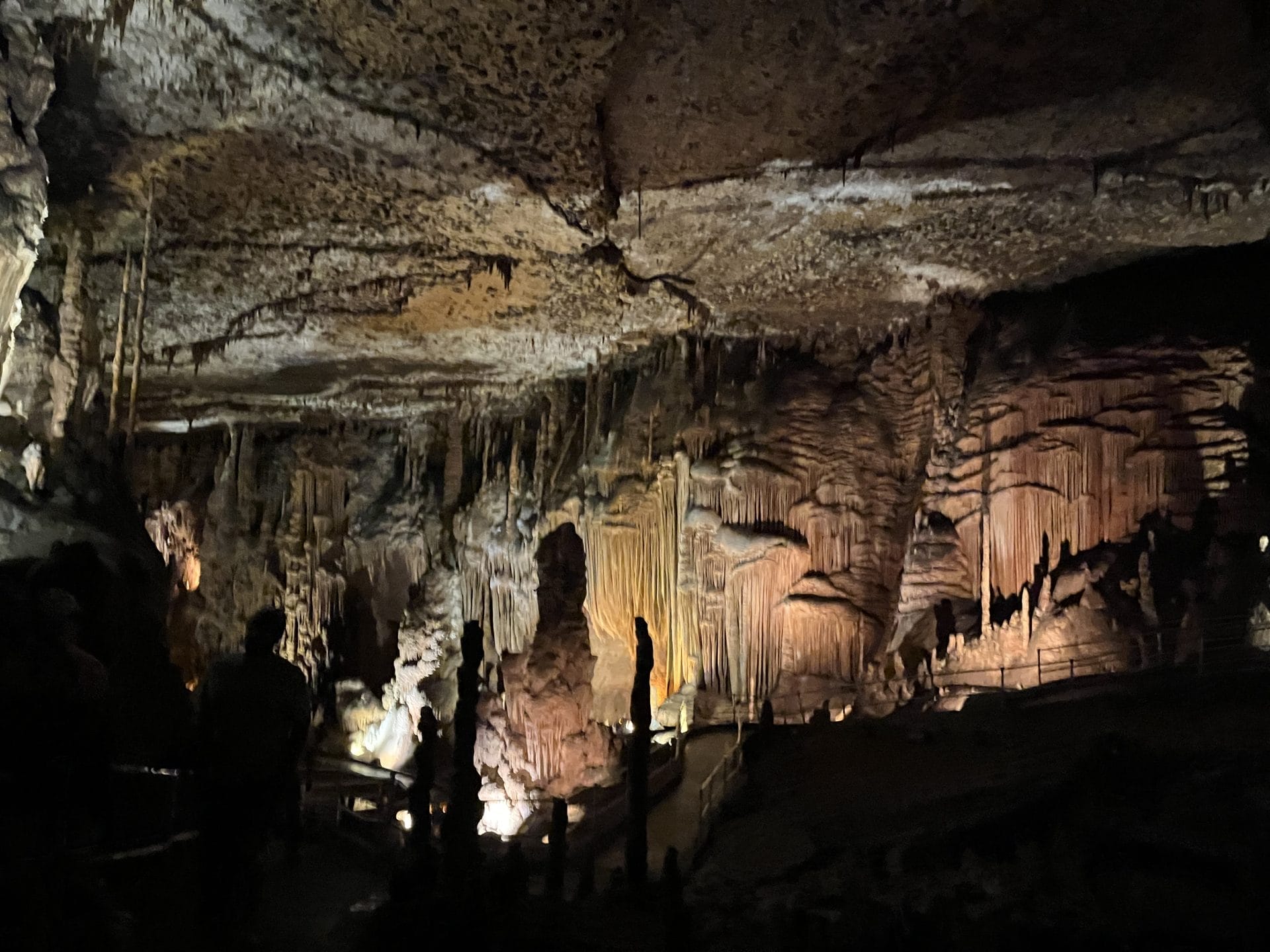

Uh oh...
It appears that you're using a severely outdated version of Safari on Windows. Many features won't work correctly, and functionality can't be guaranteed. Please try viewing this website in Edge, Mozilla, Chrome, or another modern browser. Sorry for any inconvenience this may have caused!
Read More about this safari issue.

Imagine walking through an Arkansas forest this fall – leaves crunch beneath your feet, the air is crisp, and the leaves are changing colors. Hidden treasures hang from branches or lie underfoot. Foraging is simply exploring nature and collecting edible or medicinal plants, nuts, fruits, or herbs you find along the way. It’s not magic or danger; it’s curiosity, learning, and respect.
This guide, based on our interview with the Garden of Eden, shows how even beginners can safely forage in Arkansas’s fall woods. You’ll learn what to look for, what to avoid, and some fun ideas to try on your first trip.

Foraging in the Arkansas Fall Forest
Fall is one of the best seasons for foraging. Spring is full of greens and wildflowers, but by autumn, many plants have produced nuts, berries, roots or their fall fruits. The forest is quieter, visibility improves because there are fewer leaves, and many species reach their peak in chemical concentration for flavor or medicinal purposes.
To get started:
- Bring a good field guide (or multiple) with clear photos
- Use your phone’s camera to take pictures of leaves, bark and fruit to compare later
- Go with someone experienced if possible
- Harvest only a little, leaving plenty for wildlife and regeneration
- Never eat anything unless you are 100% sure of its identification
Check out the 10 most edible plants in the Arkansas forests.

What Fruits Can You Find in the Fall Forest?
- Pawpaw: Grows on east- and north-facing slopes. The pulp is creamy and sweet; avoid seeds and the skin (which can be irritating). Use fresh pulp in puddings, breads, jams or even cheesecake filling.
- Persimmon: These fall during the season. If you try one before it’s ripe, you will pucker up; wait until it’s soft or has fallen. There are both native and introduced (Japanese) persimmons.
- Wild apples: Found scattered in abandoned fields or along edges, typically small but suitable for preserves.
- Muscadine grapes: Vines grow along woods and forest edges. Perfect for jams, wines or pies.
These fruits are often more subtle in flavor than store-bought varieties, but that’s part of the joy of foraging.

Nuts, Berries & Wild “Berries”
Collecting Fall Nuts
- Black walnut: A native Arkansas species and a highly valued find. The green husk must be removed to reveal the nut inside. Be careful and wear gloves; the green and black husk stains contain tannins with astringent quality. The nuts add excellent flavor to breads and desserts and can also be enjoyed raw.
- Hickory nuts: Easier to crack; good as a snack or ground into meal.
- Chestnuts/chinkapin (Ozark chestnut, etc.): Occasional in certain forest zones, specifically the Ozarks, but use care in identification.
- Acorns: regionally, Native Americans used the natural seeding process to make their meal for winter; many say it’s more work than it’s worth.

Berries & small fruits
- Ground cherry: The fruit hides in a red papery husk. Once the husk opens and the fruit becomes soft and sweet, you can eat it raw or use it in salsas, jams or desserts.
- Beautyberry: The bright purple berries are not safe raw, but boiled down into a jelly, they are used medicinally and for flavor.
- Elderberry: Ripens around September and must be cooked, but they are a common juice used for an immunity boost.
- Spicebush: The red berries are aromatic and spicy; the crushed leaf or twigs carry a citrusy scent. The berries can be dried and used as a substitute for allspice, and our ancestors enjoyed them in holiday baking.
- Hawthorn berry: Small pomes you can use in jams or teas.
Some of these plants are more medicinal or flavorful than just “food,” but they make great additions to your foraging toolkit and winter pleasures.

Helpful Herbs, Roots & Medicinal Plants
Fall is a great time to look at roots, seeds and late-season herbs (when energy is stored underground at the peak).
- Ginseng (wild American ginseng): Highly valued medicinal root. In Arkansas, private land harvest is limited – you can only harvest from Sept. 1 to Nov. and must follow rules (e.g.,, replant seeds).
- Goldenrod: Frequently used in small amounts as a tincture or tea, it is anti-inflammatory and beneficial for supporting the urinary system.
- Sassafras: Historically used as a “blood cleanser,” tea, or even an early root beer flavor. The root is typically used because the fruit is toxic to humans but beneficial for birds.
- Rosehips: After roses or wild rose bushes bloom, the hips (fruit) stay on; you can make jam, tea, or add them to a baked crumble dessert.
- Dandelion / Comfrey / other roots: Although young leaves are more common in spring, the roots harvested in fall are often more potent for medicinal uses like liver support.
- Jewelweed: Great for soothing poison ivy rashes; you can mash the plant and apply it to skin irritations.
- Mushrooms: Fall mushrooms can be dangerous in general. Species like Death Cap, Destroying Angels, and Autumn Skullcap are notoriously toxic. Only pick mushrooms if you are very confident or with an expert, but fall is a great time to enjoy “lion’s mane” and “chicken of the woods.”

What Do You Need to Avoid?
Every forager must have respect for caution and the land. Some key rules include:
- Don’t eat anything unless you have 100% positive ID. Use multiple sources and a guide if necessary.
- Avoid plants near roads, treated lands, or near heavy wildlife trails (pollution, runoff, contamination).
- Be aware of poisonous lookalikes: Walking stick (Devil’s walking stick), pokeweed (raw is toxic), poison hemlock (resembles Queen Anne’s lace) – these must be AVOIDED.
- Don’t overharvest – always leave enough for animals and for the plant to regenerate.
- Some species are protected or regulated.
- When in doubt — leave it out. If you are unsure, let nature stay wild so you can stay alive!
- Mark a spot where you find something, whether in a journal or a pin, and you can easily come back as you learn more.
The Arkansas Extension offices are a great place to start for beginning information and local foraging groups on Facebook.

Quick-Fire Pairing Ideas
Here are a few simple “pluck & try” combos you might test on a safe day:
Fall foraging in Arkansas offers an enjoyable way to slow down, see the woods through fresh eyes, and connect with nature in a real, tangible way. You don’t need to be an expert — just curiosity, a few tools (like a guidebook, camera, gloves), and respect for the plants. Over time, you’ll familiarize yourself with your hillsides and slopes, recognize what appears where, and feel a quiet thrill when you spot a pawpaw or black walnut.
Take it slow. Try one new plant during each outing. Bring a friend, teach a child, and view mistakes as lessons. And always tread lightly, nature rewards that kind of respect.
Special thanks to Garden of Eden and the apothecary shop at The Beard and Lady Inn for your time and help in sourcing real “hillside” information for this article! Many images used throughout this story are from local expeditions in the Ozarks.
We do the work.
You check your email.
Sign up for our weekly e-news.
Get stories sent straight to your inbox!









Like this story? Read more from Keisha Pittman McKinney
Veterans Day invites us to pause and reflect. To marvel at those who...
In Northwest Arkansas, Doomsday Coffee is more than just a place to get...
Hunting in Arkansas is an authentic experience. For many families, it’s...
Join the Conversation
Leave a Comment